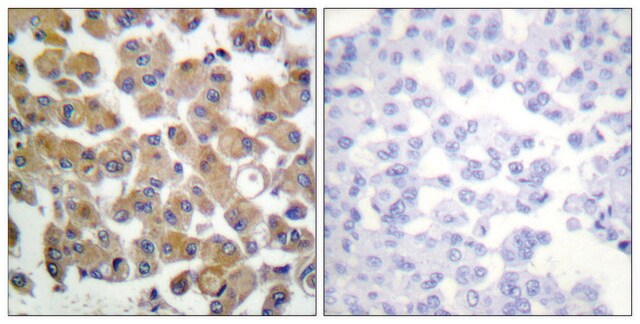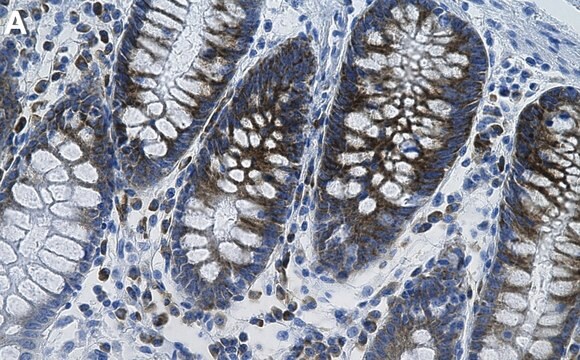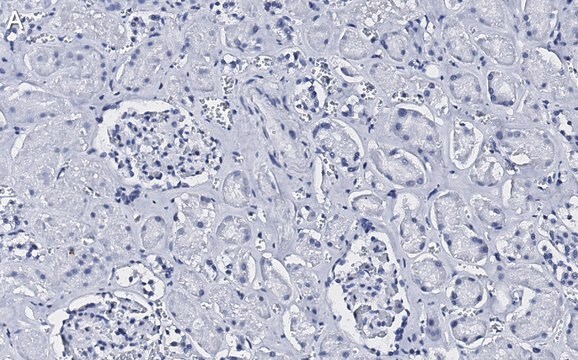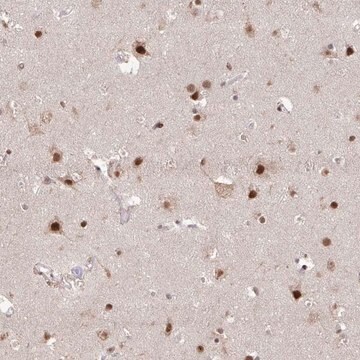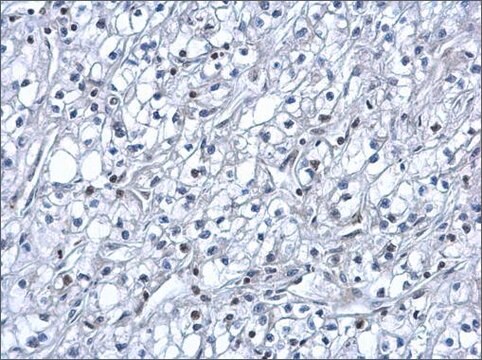H3284
Anti-Histone Deacetylase 1 (HDAC1) antibody produced in rabbit
IgG fraction of antiserum, buffered aqueous solution
Sinônimo(s):
Anti-GON-10, Anti-HD1, Anti-KDAC1, Anti-RPD3, Anti-RPD3L1
About This Item
Produtos recomendados
fonte biológica
rabbit
Nível de qualidade
conjugado
unconjugated
forma do anticorpo
IgG fraction of antiserum
tipo de produto de anticorpo
primary antibodies
clone
polyclonal
forma
buffered aqueous solution
peso molecular
antigen 65 kDa
reatividade de espécies
human, mouse
embalagem
antibody small pack of 25 μL
técnica(s)
immunohistochemistry (formalin-fixed, paraffin-embedded sections): 1:500 using human lymph node sections
immunoprecipitation (IP): 5-10 μL using whole lysate of NIH3T3 cells
microarray: suitable
western blot: 1:20,000 using nuclear extract from HeLa human epithelioid carcinoma cells
nº de adesão UniProt
Condições de expedição
dry ice
temperatura de armazenamento
−20°C
modificação pós-traducional do alvo
unmodified
Informações sobre genes
human ... HDAC1(3065)
mouse ... Hdac1(433759)
Descrição geral
Especificidade
Imunogênio
Aplicação
Immunoblotting: a minimum working dilution of 1:20,000 is determined using a nuclear extract of HeLa human epithelioid carcinoma cell line.
Immunoblotting: a minimum working dilution of 1:2,000 is determined using a whole extract of PC-12 rat pheochromocytoma cell line.
Immunoprecipitation: a recommended working volume of 5-10 ml is determined using a whole lysate of NIH 3T3 cells.
Indirect immunoperoxidase staining: a minimum working dilution of 1:500 is determined using protease-digested, formalin-fixed, paraffin-embedded human lymph node sections.
Ações bioquímicas/fisiológicas
forma física
Exoneração de responsabilidade
Não está encontrando o produto certo?
Experimente o nosso Ferramenta de seleção de produtos.
Código de classe de armazenamento
12 - Non Combustible Liquids
Classe de risco de água (WGK)
WGK 2
Ponto de fulgor (°F)
Not applicable
Ponto de fulgor (°C)
Not applicable
Equipamento de proteção individual
Eyeshields, Gloves, multi-purpose combination respirator cartridge (US)
Certificados de análise (COA)
Busque Certificados de análise (COA) digitando o Número do Lote do produto. Os números de lote e remessa podem ser encontrados no rótulo de um produto após a palavra “Lot” ou “Batch”.
Já possui este produto?
Encontre a documentação dos produtos que você adquiriu recentemente na biblioteca de documentos.
Nossa equipe de cientistas tem experiência em todas as áreas de pesquisa, incluindo Life Sciences, ciência de materiais, síntese química, cromatografia, química analítica e muitas outras.
Entre em contato com a assistência técnica
